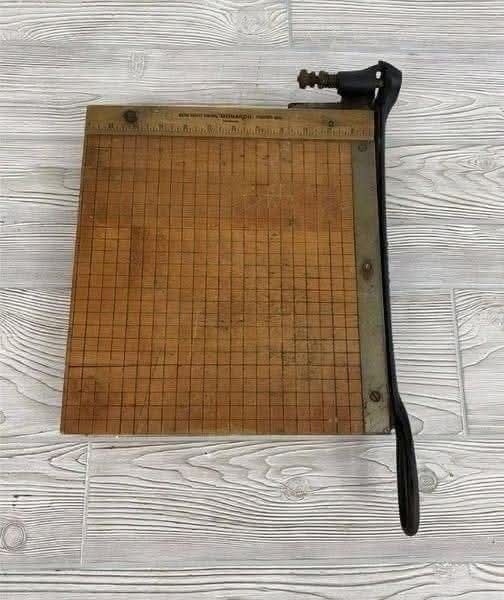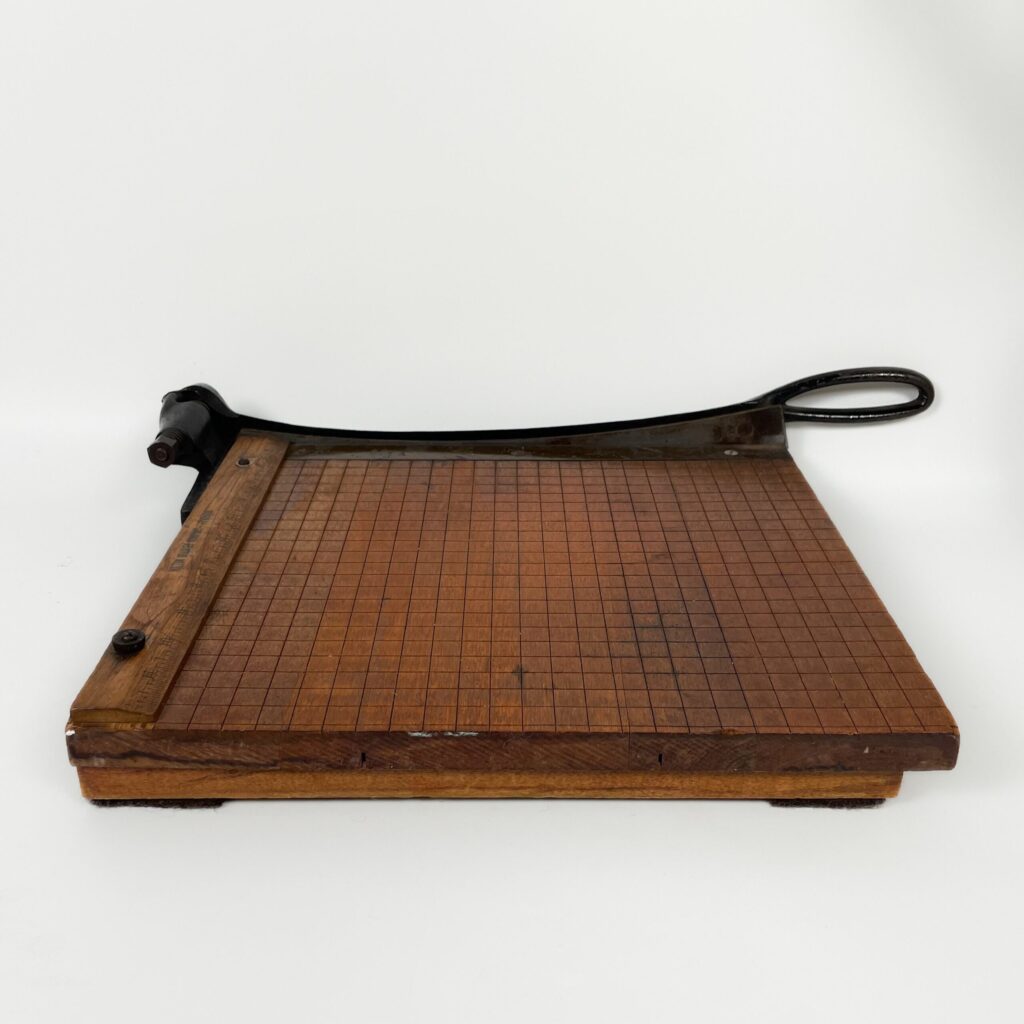Manual Tools: The humble guillotine paper cutter, once a staple in offices and print shops, has a rich history that extends far beyond its practical applications. This unassuming device, inspired by the infamous guillotine of the French Revolution, has evolved to become a symbol of precision and efficiency, captivating collectors and enthusiasts alike.
Manual Tools – Guillotine Paper Cutter
The origins of the guillotine paper cutter can be traced back to the early 19th century, when French engineer Guillaume Massiquot patented his innovative design in 1844. Massiquot’s creation, inspired by the guillotine used for executions, featured a sharp blade mounted on a lever arm that could slice through paper with remarkable ease and accuracy.
This ingenious design quickly gained popularity, as the growing demand for precise paper cutting in offices, print shops, and bookbinding industries fueled the need for such a versatile tool. The vintage guillotine paper cutter was a ubiquitous presence in offices and printing shops throughout the 19th and 20th centuries.

Its primary function was to cut large stacks of paper to a uniform size, an essential task for producing books, brochures, and other printed materials. The cutter typically featured a sturdy wooden or metal base with a built-in ruler for measurement, a clamping mechanism to hold the paper in place, and a long, levered blade that could be pulled down to neatly slice through the stack.
The guillotine paper cutter’s legacy extends far beyond its practical applications. The device’s enduring design and precision have made it a cherished collectible item among antique enthusiasts and office history buffs. Many vintage guillotine paper cutters are now sought after for their aesthetic appeal, craftsmanship, and historical significance, serving as a tangible link to the ingenuity of past generations.
While technology has advanced, and many modern offices now rely on automated cutting machines, the fundamental principles of the guillotine paper cutter remain relevant. Contemporary paper cutters still employ a similar levered blade mechanism, with enhancements such as safety guards, ergonomic handles, and precision alignment tools. This evolution showcases the enduring influence of the vintage guillotine paper cutter on modern paper cutting devices.

The guillotine paper cutter’s legacy extends beyond its practical uses. Some artists and crafters have rediscovered the joys of using vintage cutters, appreciating the tactile feedback and precision they offer compared to modern alternatives. These creatives have embraced the guillotine cutter as a tool of artistic expression, using its sharp blades to create intricate paper-based artworks and unique design elements.
The cultural impact of the guillotine paper cutter is also evident in its linguistic legacy. The term “guillotine” has become synonymous with sharp precision and decisive action, often used metaphorically in various contexts. This linguistic evolution underscores the device’s profound influence on both language and industry, cementing its place in the collective consciousness.

The vintage guillotine paper cutter represents a remarkable blend of engineering, utility, and historical significance. Its evolution from a 19th-century innovation to a modern-day collectible highlights the enduring relevance and fascination with this quintessential office tool. Whether as a functional device or a cherished antique, the guillotine paper cutter continues to captivate and inspire, testament to its timeless design and legacy.
In educational settings, particularly in the mid-20th century, guillotine paper cutters were a familiar presence in classrooms, libraries, and print shops. Teachers and students alike relied on these heavy-duty tools for everything from trimming classroom materials to preparing project displays. For many, the distinctive thunk of the blade slicing through paper evokes a sense of nostalgia, recalling simpler times when hands-on craftsmanship played a central role in learning environments.
Beyond its functionality and aesthetic appeal, the guillotine paper cutter also embodies a spirit of durability and mechanical reliability. Unlike many modern devices designed with planned obsolescence in mind, vintage cutters were built to last—often constructed from solid wood, cast iron, and tempered steel. Many are still fully operational today, passed down through generations or preserved in office museums and personal collections. This durability further enhances their allure, offering a tangible example of early industrial design that values longevity over convenience.
Museums and historical societies have begun to feature guillotine paper cutters in their exhibitions, recognizing them not just as office equipment, but as symbols of innovation and industrial craftsmanship. In some collections, they are displayed alongside vintage typewriters, drafting tools, and other relics of the analog era, celebrating the evolution of productivity and design through the ages.
The resurgence of interest in analog tools and tactile experiences has also contributed to the guillotine paper cutter’s ongoing relevance. In a digital world saturated with touchscreens and automation, many creatives, educators, and hobbyists find satisfaction in the physical act of cutting and shaping paper with precision and control. It reconnects users with the materiality of their work, offering a break from the intangible nature of digital tasks.
Moreover, the symbolism of the guillotine paper cutter continues to inspire visual artists, filmmakers, and writers. Its striking silhouette and unmistakable function have been used to convey themes of finality, precision, or even authority. In cinema and literature, a guillotine-style cutter may appear as a metaphorical device—signifying pivotal moments, irreversible choices, or the sharp clarity of decision-making.
As we navigate an increasingly automated and disposable age, the enduring presence of the guillotine paper cutter serves as a poignant reminder of the value found in simplicity, craftsmanship, and thoughtful design. It bridges the past and present—not only in function, but in spirit—offering insight into how tools shape not just our tasks, but our culture and values.
In essence, the guillotine paper cutter is more than an office relic—it is a piece of living history, a fusion of engineering elegance and cultural resonance. Whether admired for its mechanical ingenuity, repurposed for artistic expression, or preserved as a symbol of enduring quality, it continues to slice through the barriers of time, leaving a lasting impression on all who encounter it.





